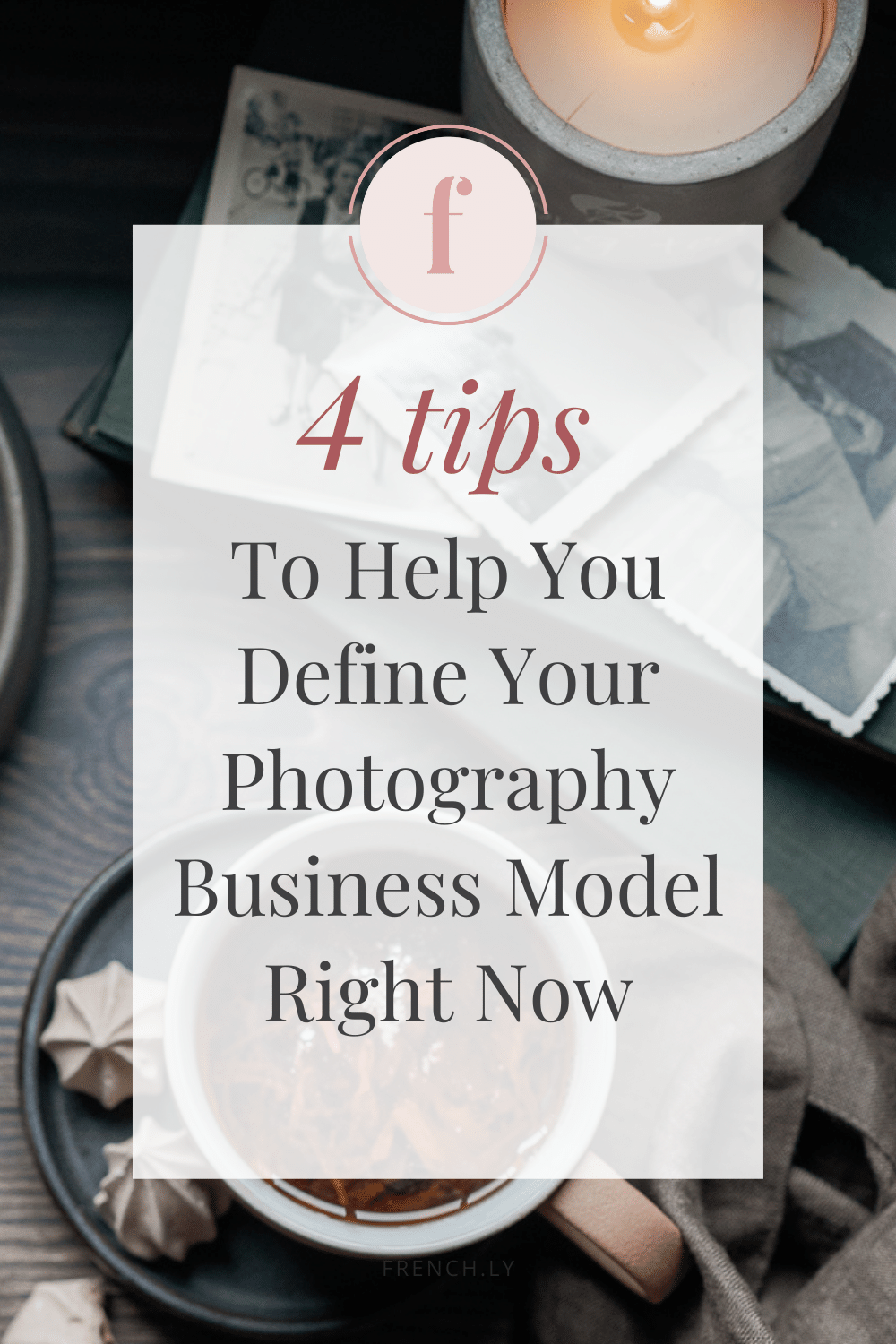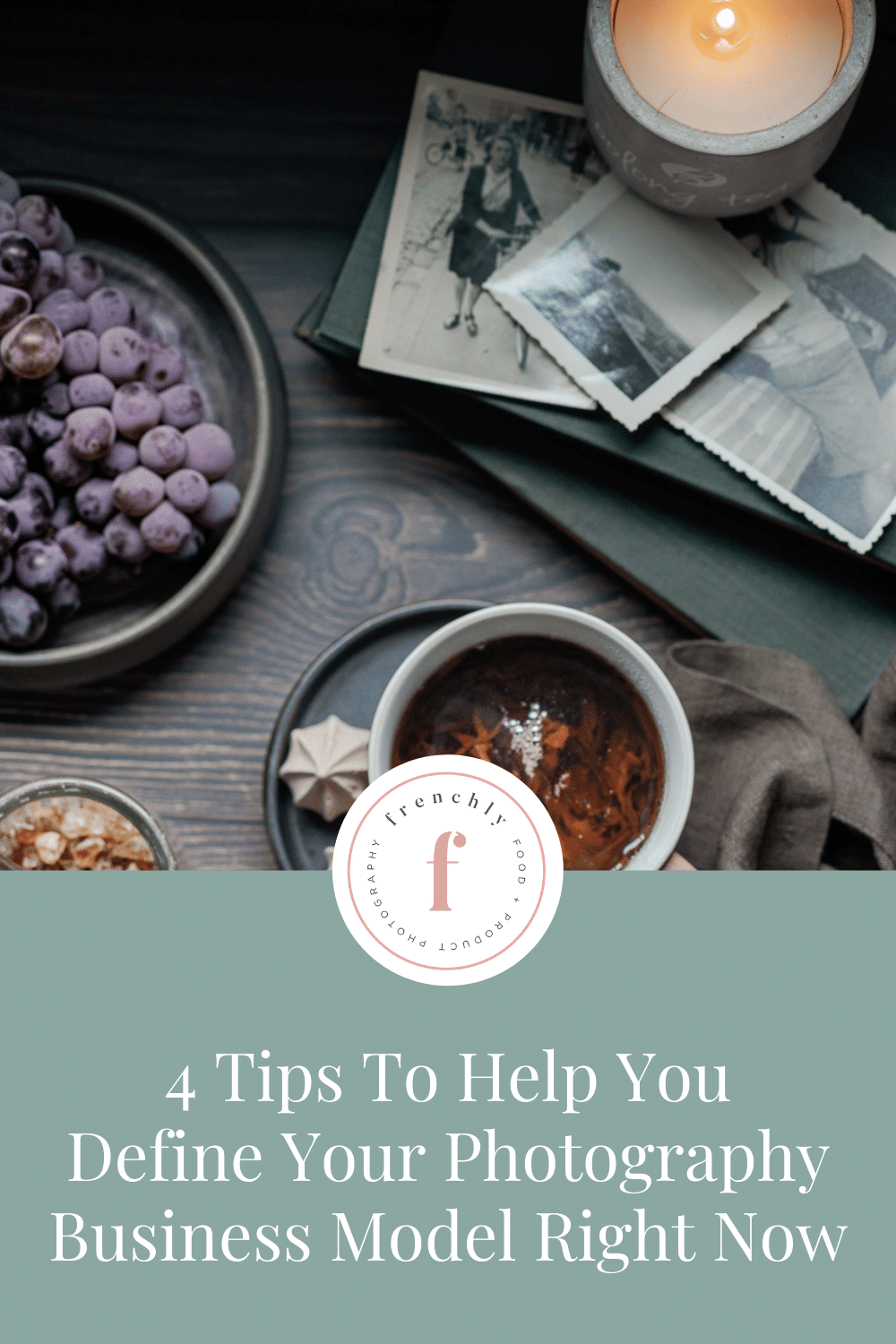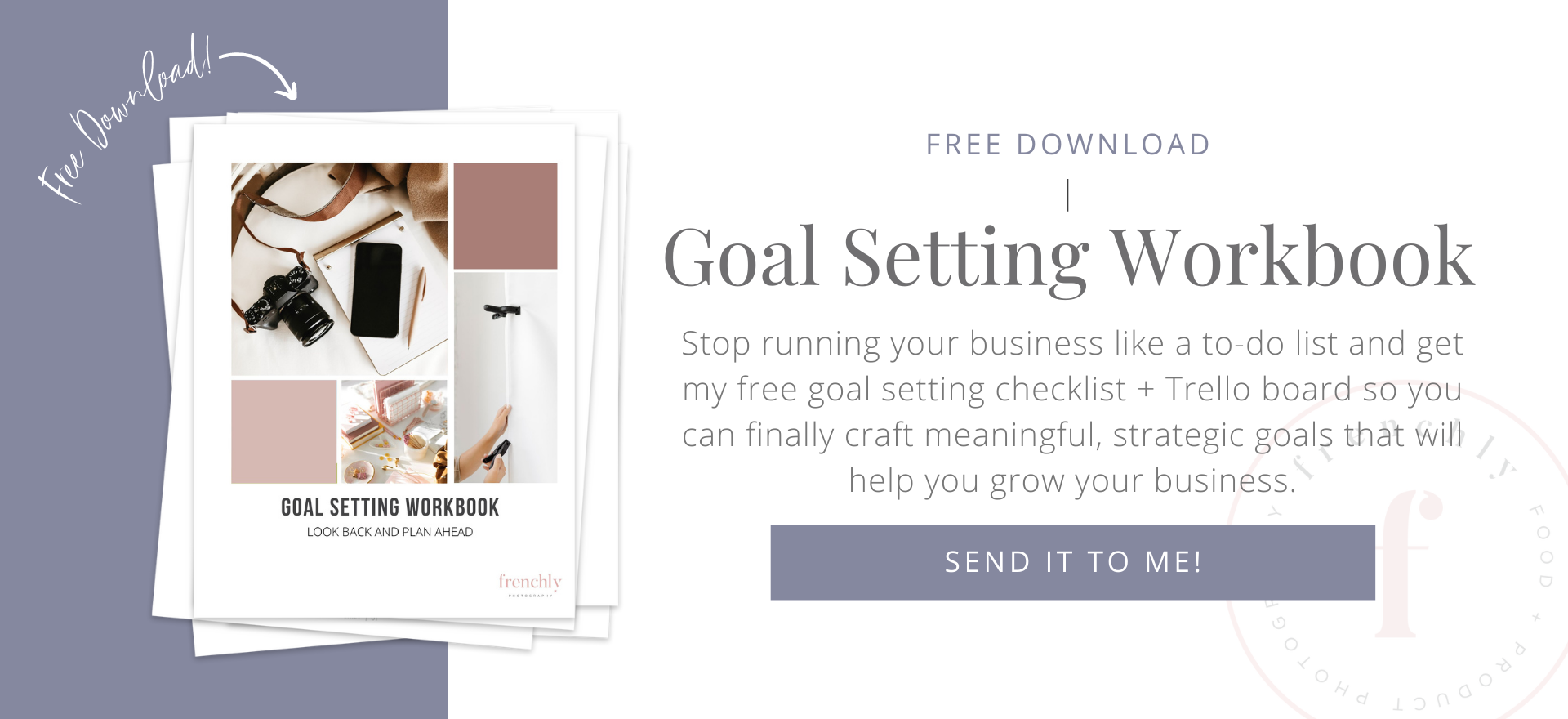In this guide, I show you how to choose who to pitch, how to find the right contact information, and how to craft a winning pitch.
PITCHING TO BRANDS AND IS THE BEST WAY TO GET YOUR IDEAL CLIENTS, AND YOU CAN DO IT WITHOUT FEELING ICKY
Gimme the Guide!
11 FOOD PHOTOGRAPHY DOCUMENTS EXPLAINED
Top Posts
11 PLACES TO SOURCE AFFORDABLE PHOTOGRAPHY PROPS AND BACKDROPS
30+ FOOD STYLING TIPS TO ELEVATE YOUR FOOD PHOTOGRAPHY
Free Resource
About Frenchly
I am a food + product photographer & educator specializing in eco-friendly and sustainable brands. When I am not working with clients, I empower creatives to start their journey by sharing my knowledge on the business of food + product photography.
4 Tips To Help You Define Your Photography Business Model Right Now
January 26, 2022
I see many photographers who believe that in order to be a real food photographer, they need to create a business that looks like somebody else’s. They feel immediate pressure to sign contracts with international brands and get featured in cookbooks! While those marks for success would be wonderful, they are not necessary to build a successful photography business model.

How To Start Identifying Your Photography Business Model
With the advent of social media, there are many avenues you can explore to create a successful photography business model. Consider the following when designing your perfect business!
What Type Of Work Do You Enjoy?
To get started, look at your past projects and try to pinpoint which one brought you the most joy.
Were you working on location? Did you get to work with a large production team? These questions will help you envision your photography business model.
Think about your favorite clients or personal projects. What part of those experiences did you like the most? It may have been working the camera, prop or food styling, or cooking and production! This is YOUR business, so you can offer everything from styling to recipe creation services based on what you enjoy.
If you have not had any projects yet, think about how you might prefer to work:
- Do you spend the most time in action, reflection, or planning mode?
- Are you more of a leader, a team member, or a lone wolf?
- Do you really enjoy the quiet post-production process where you see the world coming to life?
- Are you someone who wants to travel, or would you rather help local businesses?
In addition, you should consider any special skills or knowledge that you have from your previous careers that you could integrate into your packages. Ideas for this might include work in social media, graphic design, or direction experience.
Prioritize Your Vision When Choosing A Photography Business Model
Building the right photography business model takes a lot of work, so you need to be very clear on what makes you motivated! A precise vision for what you want your photography business to look like will help keep you moving forward when things get tough.
Create a mission statement that defines the purpose behind your business. A mission statement does not say what a company does, it focuses on why it does it.
Your reason why can be big and worldly, or small and personal. For example, you may want to work in photography to help create more time for you and your family. On the other hand, you may want to build a business that allows you to travel. You may just want the flexibility to handle whatever comes your way!
You 100% CAN share your mission statement on your website to help your potential clients align with your values. But know that it doesn’t have to be public-facing, either (it can just be something you focus on internally). Ultimately, I believe that a mission statement is more of a compass for your business allowing you to make decisions that are consistent with your goals.
Use That Vision To Create A Vision Board
Once you develop how you want your photography business model to look, you should create a vision board to hold those ideas. The goal with a vision board is to collect images and words that crystallize your vision.
Your vision board should include materials to remind you of family, friends, and other things that inspire you. Putting loved ones on your vision board will act as a reminder of your goals every time that you look at it.
Identify Your Values
Your values for your photography business model could be sustainability, inclusivity, family-friendliness, or even religion. The values that you choose should be very personal and meaningful to you. Consider which friends and businesses hold similar values!
Once you have clarified the type of clients that would be a good fit for your photography business model, you will put together your unique value proposition. Your unique value proposition, or UVP, is a statement that describes the benefit of your offer, how you solve your clients’ needs, and what distinguishes you from the competition.
In short, your UVP is what makes you uniquely qualified to help your client.
Feel free to use your UVP on your website, your bios, and your about page—in every way. If your UVP is clearly communicated, your potential clients know right away how you can solve their problems and why you are a better fit than other photographers.
Defining Your Ideal Client As Part Of Your Photography Business Model
Visualizing the types of clients that you want to work with is an important step in creating your photography business model. In order to define your ideal client, you have to know what type of photography work you will be offering!
Types Of Photography You Can Do In Your Photography Business Model
There are several types of photography to choose from. Consider each of the following before you think about your ideal client!
Editorial Photography
Editorial photography usually applies to images created for magazines (printed or online), cookbooks, food blogs, or websites. The images are used to illustrate an article, recipe, or story.
The budget for editorial work is usually on the lower end, but this type of photography can offer you more creative freedom and sometimes the possibility to work remotely.
Advertising Photography
The images created under the label “advertising” are for selling, marketing, or promoting a product or service. Choosing this route for your photography business model would mean contributing to magazine ads, packaging, flyers, and more.
Advertising campaigns for large companies have a much higher budget. They are generally organized and take place in a photo studio. You can expect to work with a large group of photographers’ assistants in this type of setting.
Content Creation
Content creation is the best of both worlds! Both editorial and advertising styles come into play when creating images for social media. More and more brands are starting to use professional photographers to fill their ever-growing needs for pictures and videos.
Budgets for content creation are all over the charts. The money you could earn depends on the size of the brands you are working for and the perceived value of your work.
In this space, you would be able to work for both “mom and pop” shops and large international companies.
Related: How To Get Started With Stock Photography
Which Type Is Best For You?
The type of photography business model that you ultimately choose boils down to your preferences.
If you want to work in a studio with a big team, your ideal client is probably a bigger brand with a large advertising budget.
If you prefer to work alone in your studio, creating social media or shooting editorial photography is probably more appropriate for you!
There are a million different ways to create a successful photography business model. There is no reason to compare your business dreams to someone else’s when the ultimate goal looks different for every person. Take the time to consider everything that you want, then make it happen!

Leave a Reply Cancel reply
| Created with Showit
| Design by Oregon Lane Studio
| Privacy Policy
© 2020 Frenchly Photography
Back to Top
THE WEBSITE
THE BLOG
Helping brands and businesses promote a happy, healthy and sustainable lifestyle through stunning food and product photography
